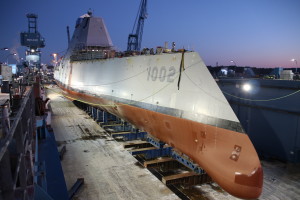
The Navy is planning to replace the gun system on each Zumwalt-class (DDG-1000) destroyer with the capability to field up to 12 hypersonic weapons as a “compelling strike platform,” according to the Navy’s fiscal year 2022 budget request. In the FY ‘22 request, the Navy is seeking $112.6 million on DDG-1000 development efforts, with a portion used to start work to integrate the Conventional Prompt Strike (CPS) hypersonic weapon system on all three DDG-1000 ships. “When combined with the low…

 By
By 











